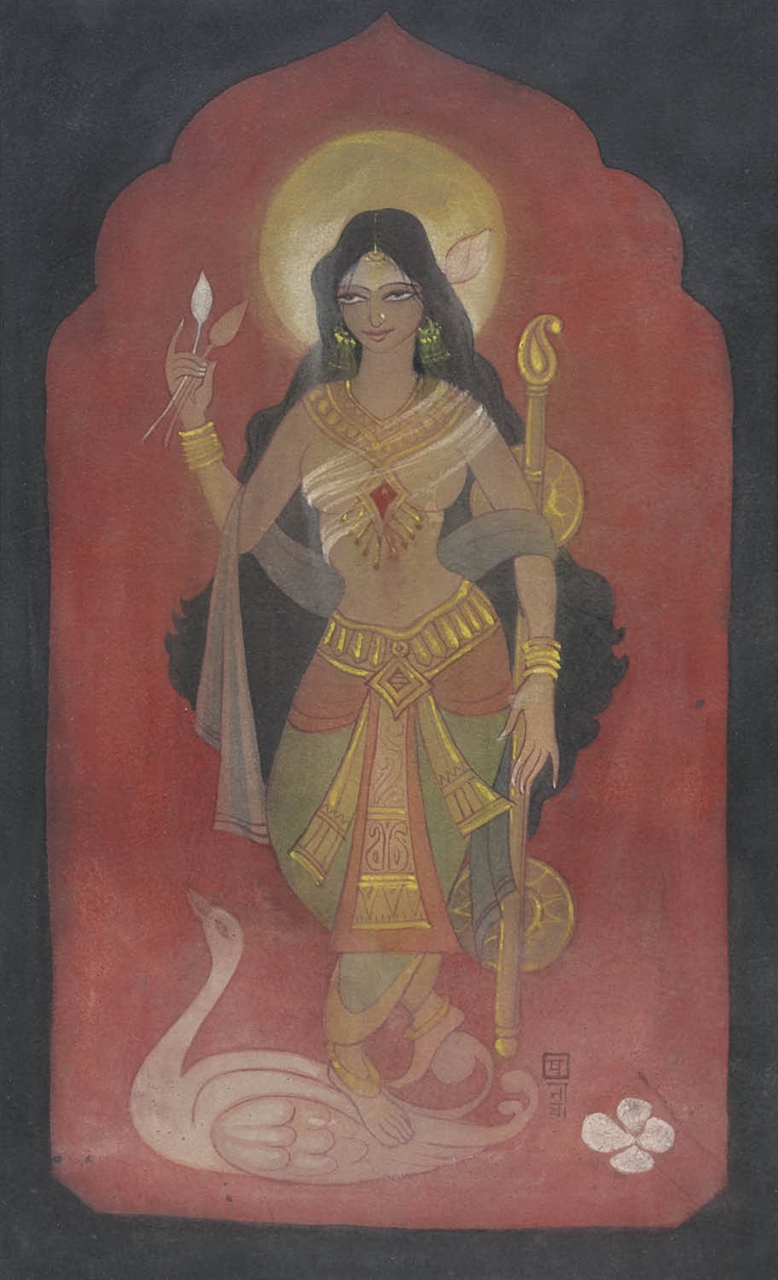![]() Significant Indian Paintings
Significant Indian Paintings
![]() Significant Indian Paintings
MANISHA
Significant Indian Paintings
MANISHA
CONTACT US
Catalogue & Viewing
Lot Closed
Accounts & Shipping
Lot Closed
-
Literature
 Literature
Literature

Painted in muted earthy colours in the technique of Wash Tempera, the painting 'Saraswati' stands as an ideal of the aesthetic cannons of Bengal School of Art. Presumably a student of Nandalal Bose,the artist Manisha, though a little known female scholar, scrupulously followed the traditions of Bengal School. Her confidence and command of draughtsman ship is evident in her spontaneous figuration employing sure flowing lines to outline the feminine form.The colour palette though muted is highlighted at places with deft brushwork thereby creating an inner radiance that seems to emanate from within. The transparency of the angavastram covering the upper half of the body stands in stark contrast to the opacity of the drapery shrouding the lower half. Her flowing hair creates a shroud in the back while the halo distinguishes her presence from the flat red background reminiscent of the Indian miniature styles of Bundi,Basholi and Malwa as well as the Patachitra (scroll-painting) tradition of rural Bengal and Orissa. The red surface is further framed by an elaborate silhouette.
The deity of knowledge and wisdom holds the veena in her left hand and a pair of lotus in the right symbolizing art and aesthetics respectively. The artist pays a fitting tribute to the feminine power ata time when higher education was ironically restricted for women.Santiniketan became an abode of women’s higher education due to the foresight of Rabindranath Tagore.
He is known to have said once: “The idea underlying the Bolpur School is to bring together pupils of all creeds and cultures and to help them to realize their spiritual brotherhood and to develop, freely and fully and at the same time, their individual and racial characteristics.”
At a time when it was not considered as imperative for a woman to have an identity of her own, artists like Manisha, though unfamiliar to us, bears the testimony of Tagore’s success in facilitating women to carving a niche for themselves.
